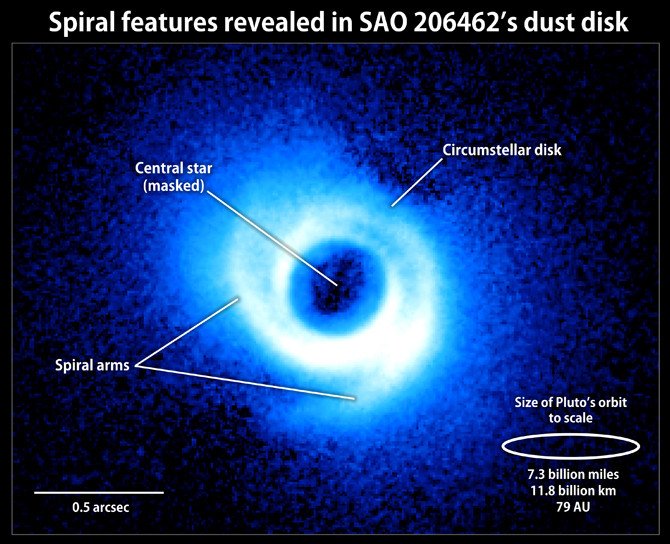GREENBELT, Md., Oct. 21 (UPI) -- A new image of spiral arms in the gas and dust around a sun-like star may provide clues to the presence of embedded but as-yet-unseen planets, NASA says.
Two spiral arms have been observed emerging from the gas-rich disk around SAO 206462, a young star in the constellation Lupus, a release from the space agency said Wednesday.















